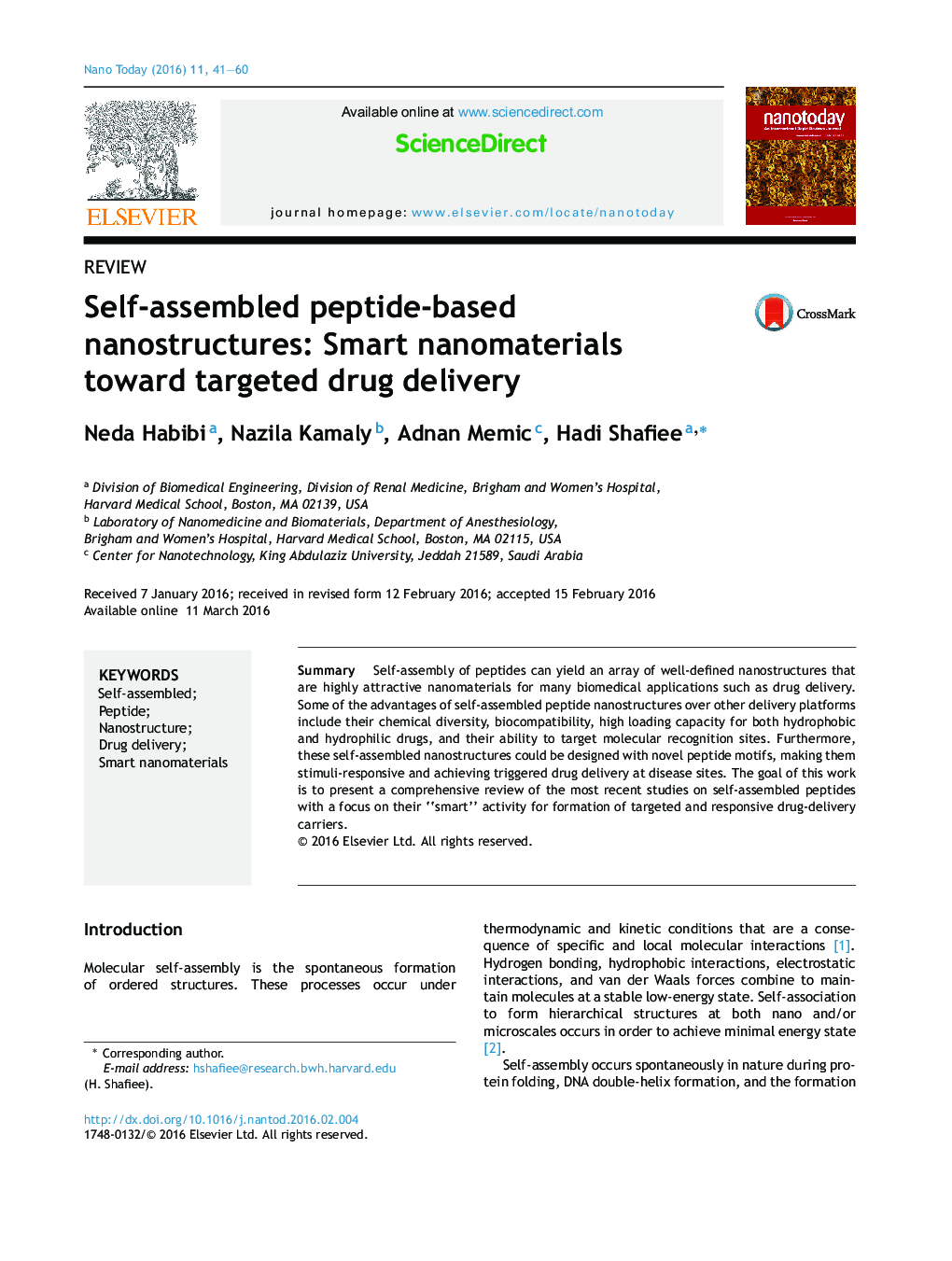| Article ID | Journal | Published Year | Pages | File Type |
|---|---|---|---|---|
| 32033 | Nano Today | 2016 | 20 Pages |
•Through self-assembly, peptides can generate well-defined nanostructures such as nanotubes, nanofibers, nanoparticles, nanotapes, gels and nanorodss.•Mild synthesis conditions, relatively simple functionalization, low-cost and fast synthesis process are among several advantages of peptides for drug delivery applications.•The self-assembled structure could be designed with peptide motifs, making them smart and stimuli-responsive.•Self-assembled peptides will be essential elements in developing next generation of biomaterials and the future of advanced drug delivery.•Comprehensive overview on the most recent studies on self-assembled peptides and their role toward targeted and responsive carriers.
SummarySelf-assembly of peptides can yield an array of well-defined nanostructures that are highly attractive nanomaterials for many biomedical applications such as drug delivery. Some of the advantages of self-assembled peptide nanostructures over other delivery platforms include their chemical diversity, biocompatibility, high loading capacity for both hydrophobic and hydrophilic drugs, and their ability to target molecular recognition sites. Furthermore, these self-assembled nanostructures could be designed with novel peptide motifs, making them stimuli-responsive and achieving triggered drug delivery at disease sites. The goal of this work is to present a comprehensive review of the most recent studies on self-assembled peptides with a focus on their “smart” activity for formation of targeted and responsive drug-delivery carriers.
Graphical abstractFigure optionsDownload full-size imageDownload high-quality image (227 K)Download as PowerPoint slide
